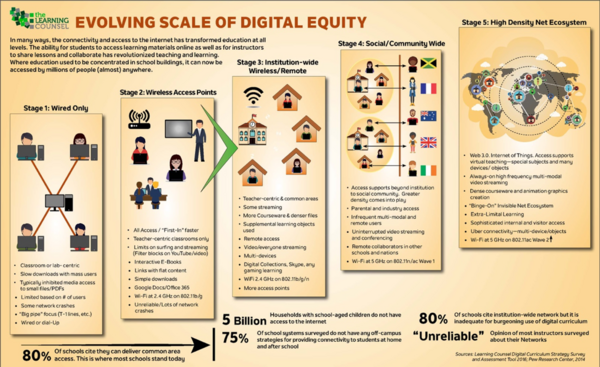Reflecting on the National COSN event in April, one thing is clear. Digital equity is a complicated, and an all too common challenge facing primary education. Thought leaders, recognized for their innovative and successful solutions to the challenges of digital equity, delivered powerful messages around the importance of tackling digital disparities facing schools, students, and communities. While everyone agreed that the goal was to achieve equitable access to opportunity, the differences between suggested causes and solutions ranged from nuanced to significantly divergent.
Digital access challenges and solutions
- The quality and availability of Internet access among schools/communities/students, along with the varying approaches of providing subsidized broadband at home vs. free out-of-home through anchor institutions.
- Digital device access approaches, from leveraging BYOD, to centrally funded and shared, and 1:1 devices, to using tablets or Chromebooks and laptops. Whether devices should be family subsidized and/or personally insured also varies.
- Selection of, access to, and funding for digital content quickly devolves into hotly debated discussion as the choices range more greatly than those in other areas. (Static digital version textbooks versus dynamic/interactive multi-format learning objects, curated versus filtered versus open, restricted to standards aligned-only or open self-directed.)
- Perhaps the newest topic to the digital equity debate is technology sustainability. This includes perpetual and/or recurring funding for subscriptions and renewals, teacher professional development technology versus dedicated technology coordinators, and the choice around classroom-based or follow-the-student-based technology strategies.
Only one thing is clear. There is no argument that we must take action to face what will determine the future of our students, nation, and global society. The longest journey begins with the first step - create your plan to address this seemingly overwhelming challenge of transitioning to digital learning. Start by determining where you are on the scale of digital equity, a framework developed by The Learning Counsel, to help you determine how you will tackle the digital equity challenge.











